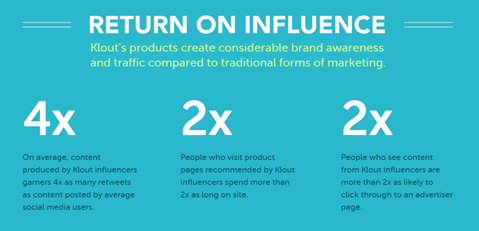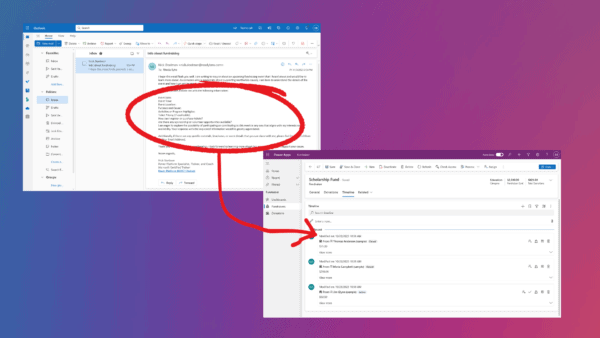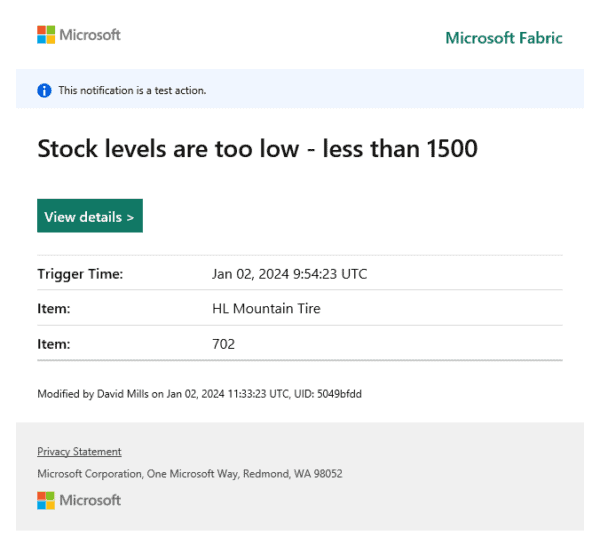I just finished reading Return on Influence by Mark Schaefer (his blog), which focuses a good portion of its pages on the rising importance of social scoring and, specifically, the Klout platform, and its potential impacts not only to corporate and professional marketing, but on the way we capture, analyze, and consume data about our many networks – whether they be networks (or circles) of customers, employees, partners, or friends. I’ll dive more deeply into the book itself in a future post, but want to instead capture a few of my key takeaways of this must-read for modern corporate enthusiasts.
Just to clarify – social scoring is not just about tracking the number of tweets or followers of an individual. Klout manages more than 100 different data points within their algorithms and is constantly refining and changing those algorithms based on what they learn from the data, and as network patterns ebb and flow. While there is still the occasional mistake – such as associating the topic of My Little Pony to a technology professional like Seb Matthews (this is my attempt, by linking his name to the topic, to get My Little Pony to show up in his Klout profile Smile with tongue out) – the platform is rapidly improving, and the applications of these scoring mechanisms are countless.
About my title to this post: I really do think that what Klout is working to perfect is one of the most important technologies we’ve ever seen, with the potential to revolutionize sales, commerce, marketing, people management, and more.
Social scoring will one day become as ubiquitous as maps have become to mobile phones. You just expect them to be there, and regardless of the brand providing the tools, you expect them to work in a certain way, and to get you from point A to point B (unless driving in downtown Boston, in which case maps don’t work. It’s the Bermuda Triangle of GPS devices). However, as I wrote about in a previous post, social scoring is just one data point (or set of data points) and like any data analysis effort, should be combined with other data and resources, online and offline, to paint a more complete picture of a user, or of a company or product. Call it “analytics triangulation,” if you will.

My reading habits may seem eclectic to some, but I really do try to suck every useful morsel out of the business and marketing books I read, as illustrated in the image above. As I read, I mark up, annotate, and dog-ear pages that have actionable ideas that I want to follow up on. As you can see from the image, I had quite a few takeaways from Return on Influence as I was sitting on airplanes these last two weeks, and started jotting down ideas for ways that social scoring could change a number of different products and services…..only to find that many of the ideas I had reached were shared by others, and captured in the final chapter of the book. For example, Robert Scoble (@scobleizer) shares his thoughts on connecting online and offline behaviors, making social scoring a powerful potential solution for test marketing a product. The author shares his thoughts around social scoring’s logical fit with customer relationship management platforms – which was where my thoughts were going, as well.
 Think of what you could get with Klout integration with Salesforce or Dynamics CRM, allowing you to capture influence metrics for companies, brands, and individuals image associated with them. You could then create lead generation and email campaign strategies focusing on key influencers or with people that have influence over combinations of topics – like SharePoint and Yammer, or Seb Matthews and My Little Pony (attempt #2). You’ll be able to better target your marketing efforts toward those users with the greatest likelihood to take action: to forward it, blog about it, buy it, recommend it, or to come into the brick and mortar store.
Think of what you could get with Klout integration with Salesforce or Dynamics CRM, allowing you to capture influence metrics for companies, brands, and individuals image associated with them. You could then create lead generation and email campaign strategies focusing on key influencers or with people that have influence over combinations of topics – like SharePoint and Yammer, or Seb Matthews and My Little Pony (attempt #2). You’ll be able to better target your marketing efforts toward those users with the greatest likelihood to take action: to forward it, blog about it, buy it, recommend it, or to come into the brick and mortar store.
Another application might be augmenting (or replacing) the annual review process, basing raises, rewards, and recognition on social scores – assuming there was a blending of online and offline data points, such as 360-degree feedback. This might go a long way into fixing the sometimes perceived (but mostly real) problems with fiefdom-building, favoritism, and high-quality employees being overlooked because they just don’t do enough “managing up.”
Social scoring is a fascinating space and one which is growing rapidly. Schaefer includes a list of related companies at the back of his book and explains their value add. I’ve been checking out a few of them (you may have seen my tweets), and not all are up and working – fewer more look to provide any real value. But I’ll keep testing the waters, and will share my findings.
And if you’d like to see my Klout profile (hovering around 72 right now), you’ll find my page here.
Christian was a speaker at the ESPC 2013. Check out Christian’s blog for more insightful content!
For more SharePoint content from Christian and other SharePoint specialists check out our resource centre!











